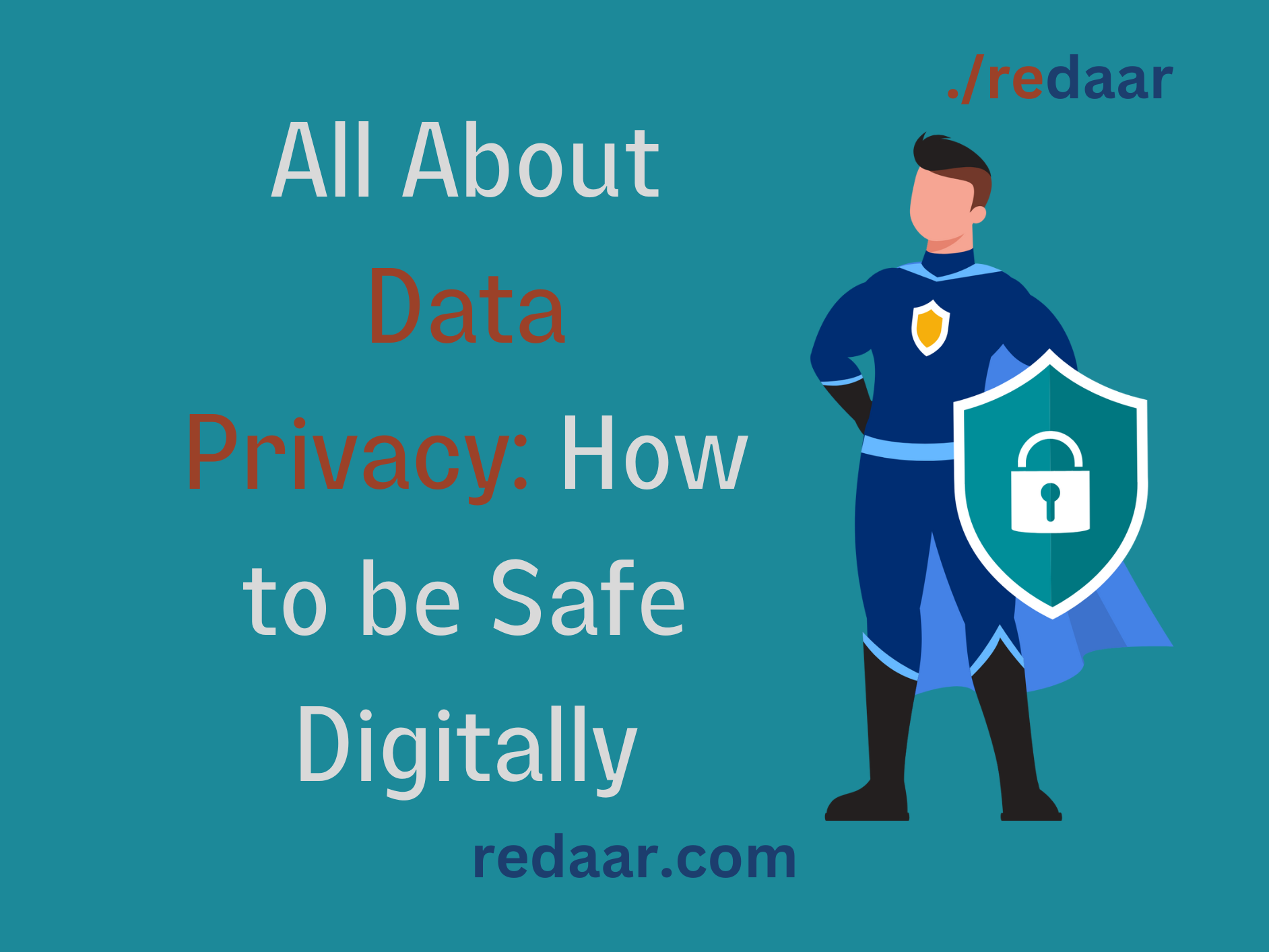Data has risen to the top of the most valuable assets in the digital age. Every day, huge volumes of data are collected and stored by businesses, governments, and people. Although this data has made tremendous improvements and conveniences possible, it has also caused privacy issues to be questioned.
The protection of personal information and the freedom of individuals to decide how their data is gathered, utilized, and shared are referred to as data privacy. This article discusses the value of data privacy, its hazards and difficulties, and the precautions that people and organizations can take to protect personal data.
The Significance of Data Privacy
Data privacy is important for several reasons:
Protecting Personal Information: Sensitive personal data, like social security numbers, financial information, and medical records, are kept private and secure thanks to data privacy.
Preserving Individual Rights: The right to privacy, which is a fundamental human right recognized by international law, is connected to data privacy. Individuals’ liberty and control over their personal information are preserved when data privacy is respected.
Building Trust: In an era of data breaches and cyber-attacks, data privacy practices are critical for building and maintaining trust between individuals and organizations.
Preventing Identity Theft: By using stolen data to pass for real people and commit fraud, identity theft can be prevented with the deployment of appropriate data privacy measures.
Supporting Innovation: Finding a healthy balance between data privacy and sharing can encourage innovation while safeguarding sensitive data.
Challenges to Data Privacy
Topmost challenges that Data Privacy is facing in this digital age:
Data Collection and Profiling: Large volumes of personal information are frequently gathered by businesses, which allows for the creation of detailed profiles and the personalization of advertising campaigns. Concerns concerning transparency and consent are raised by this.
Data Breaches and Cybersecurity: Sensitive information is exposed through cyberattacks and data breaches, which can result in identity theft, financial loss, and reputational damage for both persons and businesses.
Third-Party Sharing: Numerous online apps and services share user data with third parties for a variety of reasons, frequently without the users’ full knowledge or consent.
Government Surveillance: Under the guise of national security, governments may engage in widespread monitoring, violating the privacy rights of their constituents.
Lack of Awareness: Many people lack informed consent because they are ignorant of how their data is being gathered, utilized, and shared.
Protecting Data Privacy: Best Practices
Here are the best practices that organizations and individuals must take to protect their data privacy:
1. Individual Measures:
Be Informed: Recognize the privacy policies of the apps and websites you use. Know what information they gather and how they use it.
Limit Sharing: On social media and other online platforms, try to refrain from disclosing unneeded personal information.
Strong Passwords: For each account, create a strong, one-time password, and think about using a password manager.
Two-Factor Authentication (2FA): When possible, enable 2FA to provide your accounts an extra layer of protection.
Regular Updates: Update your hardware and software frequently to guard against known vulnerabilities.
Public Wi-Fi: Avoid using public Wi-Fi networks to access sensitive data since they are less secure.
2. Organizational Measures:
Compliance with Data Protection Laws: Organizations must abide by pertinent data protection laws and standards, such as the California Consumer Privacy Act (CCPA) in the US or the General Data Protection Regulation (GDPR) in the EU.
Data Minimization: Just the information needed to achieve the intended goal should be collected, stored, and deleted.
Transparency: Provide clear and concise privacy disclosures while being open and honest about your data gathering and usage policies.
Consent: Before collecting and utilizing someone’s data, be sure you have their express and informed consent.
Data Security: To safeguard data from unwanted access and breaches, use strong cybersecurity safeguards, encryption, and access controls.
Employee Training: Inform staff members about data privacy best practices and the value of protecting sensitive data.
3. Government and Policy Measures:
Governments should pass robust data protection legislation that safeguards people’s rights to privacy and provide unambiguous responsibilities for businesses managing personal data.
Enforcement: Make sure that data protection regulations are effectively enforced and that there are deterrent penalties for breaking them.
International Cooperation: As data travels across borders, encourage international cooperation on data privacy challenges.
Surveillance Oversight: To keep track of government surveillance operations and safeguard citizens’ right to privacy, open oversight and accountability measures must be put in place.
In our digital age, data privacy is a vital concern. To protect privacy, foster trust, and promote technological innovation, personal data must be collected, used, and protected responsibly. The protection of data privacy is a shared responsibility between individuals and organizations, and it is achieved through informed behavior and preventive measures.
Enacting and upholding data protection regulations that strike a balance between privacy and innovation is another crucial duty of governments. We can give everyone access to a safer, more reliable online environment by putting data protection first. Keep following us for more such articles.

